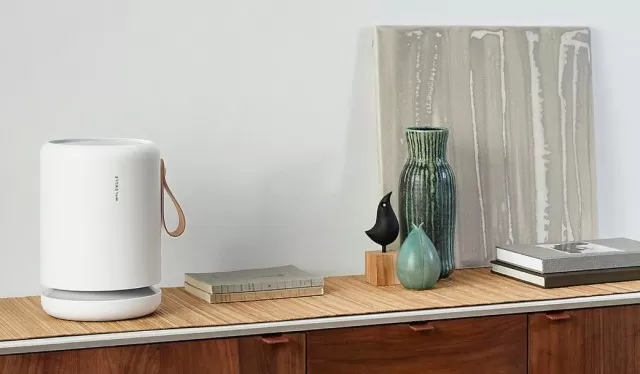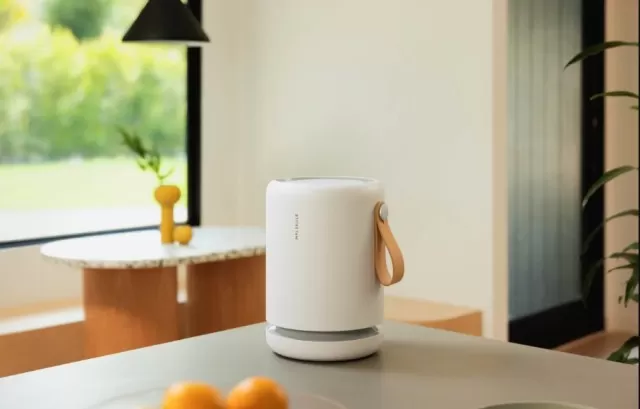By incorporating air purifiers into your home, you can take a proactive approach to improving your indoor Air Quality and safeguarding your health and well-being.
Understanding Home Air Quality

Maintaining good air quality within your home is crucial because poor air quality can have adverse effects on your health.
It can lead to a range of issues, including eye, nose, and throat irritation, headaches, dizziness, fatigue, and respiratory diseases. Furthermore, it can exacerbate chronic conditions such as heart disease and cancer.
Clean air plays a pivotal role in enhancing your quality of life, underscoring the importance of ensuring that the air in your home is as clean as possible.
Kenneth Mendez, the president and CEO of the Asthma and Allergy Foundation of America (AAFA), emphasizes the significance of indoor air quality.
He points out that people spend more than 90% of their time indoors, where air quality can be two to five times more polluted than outdoor air. One of the primary contributors to poor indoor air quality is dust.
According to Mendez, household dust mainly comprises human debris, including skin cells, hair, and other particles. Indoor air irritants typically stem from sources such as dirt, pollen, animal dander, mold spores, microplastics, and fibers.
It’s worth noting that seemingly harmless layers of settled dust can become airborne during cleaning or when a gust of wind enters a room.
Dust, dust mites, and their droppings can quickly find their way onto your clothing or into your respiratory system. An air purifier is a valuable tool for removing dust from your home, mitigating dust-related irritations, and ensuring cleaner and healthier indoor air.
Key Takeaways:.
Poor indoor air quality can have various adverse health effects and impact your quality of life.
Indoor air can be significantly more polluted than outdoor air due to various indoor pollutants. Dust is a common indoor air irritant, and it’s composed mainly of human debris and other particles.
Air purifiers can effectively remove dust and other airborne particles, contributing to cleaner and healthier indoor air. By incorporating air purifiers into your home, you can take a proactive approach to improving your indoor air quality and safeguarding your health and well-being.
The Advantages of Air Purifiers and Key Considerations

Utilizing an air purifier as a means to combat dust can yield substantial benefits by significantly reducing the presence of minute particulate pollutants, allergens, and harmful toxins in your indoor environment.
These improvements in air quality offer several advantages:.
Alleviates Symptoms for Respiratory Conditions: Individuals with respiratory conditions like asthma can experience a notable reduction in their symptoms, as air purifiers help to remove airborne irritants that trigger discomfort.
Diminishes Cardiovascular Risks: Enhanced air quality contributes to a decrease in the risk of cardiovascular diseases, promoting better heart health.
Enhances Sleep Quality: Cleaner air, free from allergens and pollutants, fosters an environment conducive to improved sleep quality and overall well-being.
To maximize the efficacy of an air purifier for dust elimination, consider these critical factors:.
Clean Air Delivery Rate (CADR): The CADR metric denotes the volume of particles that an air purifier can filter within a specified timeframe.
Select an air purifier with a CADR suitable for the size of the room you intend to use it in. Larger spaces necessitate higher CADR values to maintain effective purification.
Size: Choose an air purifier model tailored to your room dimensions.
Opt for units designed for larger areas than your space to operate them at lower, quieter settings while maintaining efficiency.
Filters: Assess the filtration capabilities of air purifiers, including features like odor filters, HEPA filters, ionizers, and washable prefilters.
Ensure that the chosen purifier includes filters suitable for your specific needs. Additionally, factor in the frequency of filter replacements, as this influences operational costs.
Reusable or washable filters can be cost-effective alternatives.
Fan Speed: Some air purifiers are equipped with fans that adjust according to real-time air quality, ensuring optimal performance.
Others offer night mode settings that reduce fan speed for quiet operation during sleep.
Certification: Look for certifications, such as those from the Association of Home Appliance Manufacturers (AHAM).
These certifications guarantee appliance safety, efficiency, and performance standards. An ASL and AAFA certification indicates that an air purifier can effectively reduce allergens in the air, prevent reintroduction of allergens, and limit ozone emissions.
Additional Measures to Combat Dust in Your Home

In addition to using an air purifier, you can employ these strategies to further reduce dust in your home:.
Identify Dust Sources: Identify and address the sources of dust in your living space.
Maintain Adequate Ventilation: Ensure your home is adequately ventilated to promote air circulation and minimize dust accumulation.
Regular Vacuuming: Vacuum your floors, carpets, and upholstery regularly using a Vacuum Cleaner equipped with a HEPA filter.
Curtain Cleaning: Clean curtains and drapes routinely to prevent dust from settling on them.
Fabric Choices: Consider using leather or vinyl instead of fabric materials for furniture, as they can be easily wiped or washed.
Bedding Hygiene: Wash bedding in hot water to effectively eliminate dust mites.
Control Humidity: Maintain indoor humidity levels within a comfortable and healthy range to prevent dust buildup.
By incorporating these practices and utilizing an effective air purifier, you can create a cleaner and healthier living environment for you and your family.
Determining the Ideal Placement for an Air Purifier.
Selecting the optimal location for your air purifier is crucial for its effectiveness.
Place it in the room where you spend the most time, typically the bedroom or Living Room. Ensure that the purifier has unrestricted airflow, away from obstructions like furniture or curtains.
*The information is for reference only.